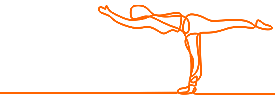articles : self-care

disclaimer
This article is specifically for my clients. If you are not a client of mine, you must be aware that working with tools is not appropriate for everyone. You should consult with your PCP prior to using any tool on your soft tissues.
some of my favorites
We may not have discussed every tool I'm listing here when you were in the studio. Please focus on the ones we did. I do not endorse any of these products nor am I a fan of Amazon. Amazon just happens to be convenient. So, please shop around or look for items you already have. Find what suits your needs as well as your budget.
- ample water intake and sufficient sleep: I'm being a nag here, but no matter what else you do, without ample water and sleep you're going to feel cruddy.
- tennis ball
- lacrosse ball
- golf ball or small high bounce ball
- Tiger Tail massage stick OR small rolling pin
- Rumble Roller, 12 Inches / half size. Black is extra-firm. Blue is medium. You can always soften a firm roller with cloth. You cannot make a soft roller more firm.
- yoga blocks
- TriggerPoint Foam Massage Ball 5-inch / or equivalent
- TheraCane / or equivalent
- mobility bands (10-35 lbs), great for exercise and assisted stretches
- yoga pad
- pillows, towels, rolled blankets
- heating pad, cold packs, small water bottle filled and frozen
- ice bag, great for travel
pain scale
Let's review pain scale. A zero is nothing. A 10 is horrific. A 6 or 7 is the realm where you feel discomfort, but you can EASILY endure it. You can breathe easily and are able to hold an in-depth conversation. A stretch never exceeds a 3. If it does, you need to back out of it a bit.
your work with tools
Start with a stretch of your problem area. Note the areas that feel tight, those that limit your position. Those areas are the ones you will target with your tools.
When working with tools, try to lie or sit on them so that gravity does most of the work for you. Then you can relax into the work, allowing the tissues more time to release. Be patient: Find a tender spot at no higher than a 6/7 and hold there for 30 seconds. After 30 seconds, make a note of your pain level. Whether your pain level has dropped at this time or not, you may hold another 30-60 seconds in the same position to see if it does. After 90 seconds, it's time to move on to another place on your body.
Tip: Find your 6/7 and slowly breathe while counting to 30. Focus on your breath so that when you check back in to what it is you're feeling, you can more easily notice a change or lack of one.
Once you're done using your tools, stretch. Always finish with a 20-30 second stretch. You should notice the stretch is more fluid. If the stretch is still uncomfortable, you may hold a bit longer to see if the discomfort settles out to a level 0. Before stretching deeper, check to ensure movement in and out of your current stretch position does not hurt in either direction. Only when that movement is pain free should you go a bit deeper into your stretch.
There will be a day when it is difficult for you to find tender areas with your tools. At this time, rolling should feel pretty good. So yeah, go ahead - roll away.
the frequency of your work
If you're in pain or you want to increase range of motion, I suggest you work with a tool a couple times each day. Don't go crazy. Do not work the same spots more than once / day. If you overwork your tissues, you might feel bruised for a day or two, but you should never see a bruise. If you have overworked an area, wait until it is no longer tender to touch before using a tool in that spot again and, of course, work more gently.
Pain or no pain, I encourage you to gently stretch several times throughout the day.